Why
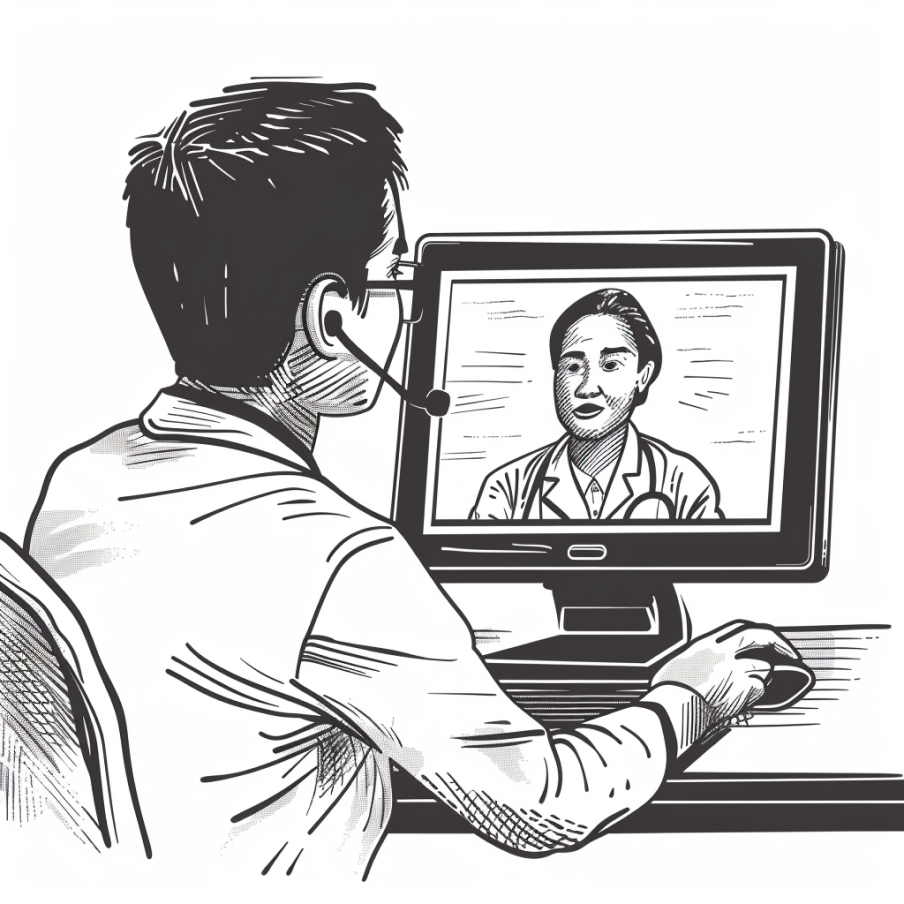
From Passive Watching to Active Learning
Imagine a world where learning feels less like a chore and more like an adventure. Traditional medical training, with its static videos and passive watching, often leaves learners feeling disconnected and uninspired. You’re watching a video of a doctor and a patient, absorbing information, but there’s a barrier — you’re not truly engaged. The knowledge might stick for a while, but without active participation, it fades quickly.
Recently, we piloted an innovative project using our virtual patient simulations to take what was once a passive educational video and turn it into an engaging, role-playing experience. Here’s a deep dive into how we did it and why it matters.


Wendy Whitmore,
Chief Learning Officer, 4MedProPlus Corporation4MedProPlus Corporation
4MedProPlus Corporation is a Chicago-based company specializing in online healthcare industry education and training. Founded in 2010, 4Med+ offers a comprehensive range of accredited self-paced courses and certifications covering essential topics such as Health IT, HIPAA, Cybersecurity, Compliance, and Critical Documentation.
Their unique approach combines multimedia content, hands-on practice with engaging web-based tools, and modular learning paths to cater to continuing education and workforce development needs. The company’s robust network of subject-matter experts and innovative training solutions make it a pivotal resource for enhancing professional healthcare education.


Previous 4Med+ Video Experience
The Problem with Traditional Training
Traditional medical training often relies on video-based learning, where students watch a pre-recorded session of a doctor interacting with a patient. While this method imparts knowledge, it lacks interactivity and engagement, essential elements for effective learning.
Additionally, access to skilled patient actors is limited, costly, and logistically challenging, leading to gaps in training, especially in soft skills and patient communication.
How

Interactive Virtual Patient Simulation
Xuron’s platform transforms these passive experiences into interactive simulations, where learners step into the shoes of a healthcare professional. Our recent pilot project focused on a telehealth simulation featuring Tim, a virtual patient presenting with a severe poison ivy rash. Here’s how the process works:
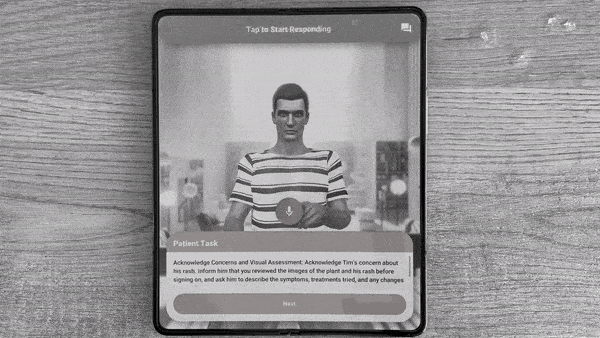
Immersive Learning Environment
Using our Xuron Development Toolkit, we create realistic and engaging scenarios. The platform allows learners to interact with virtual patients like Tim, who respond dynamically to inquiries, mimicking real-life patient interactions. This hands-on approach enhances understanding and retention of knowledge.

Our Development Process
Received Existing Video & Educational Objectives

Create Virtual Patient Persona and Medical History
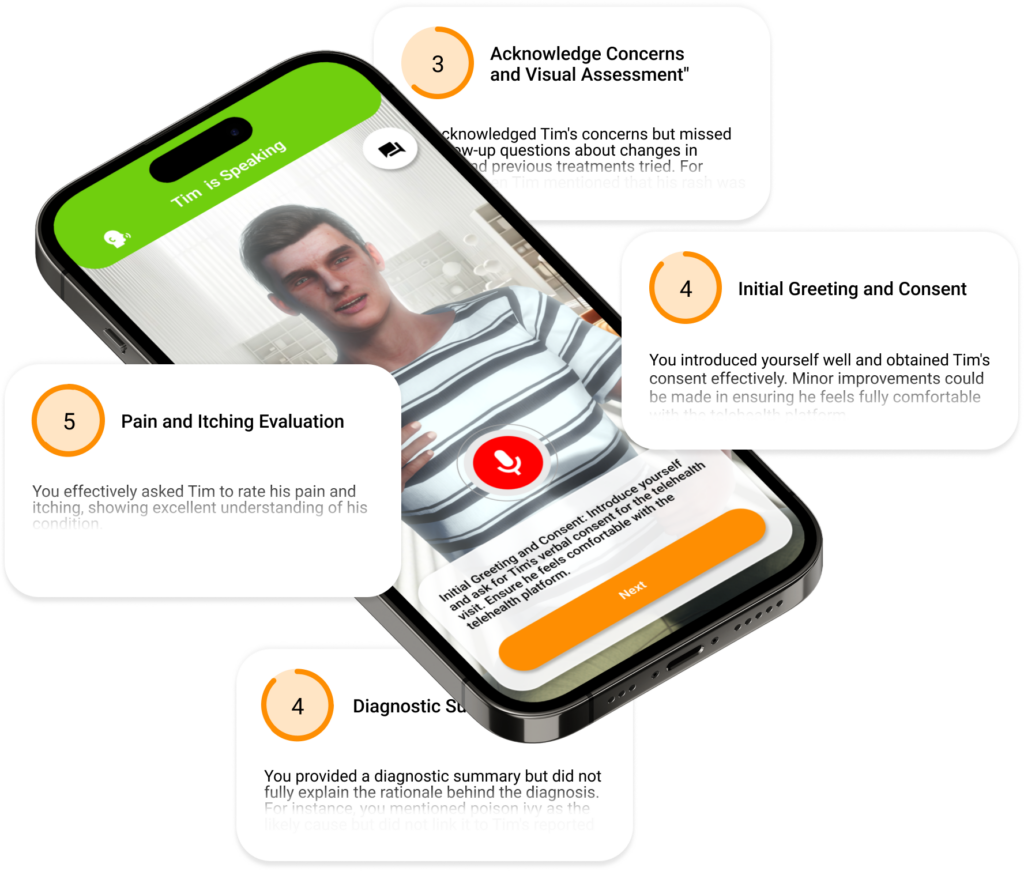
Customer Check Ins For Feedback on Exercise Development

Final Delivery and Distribution
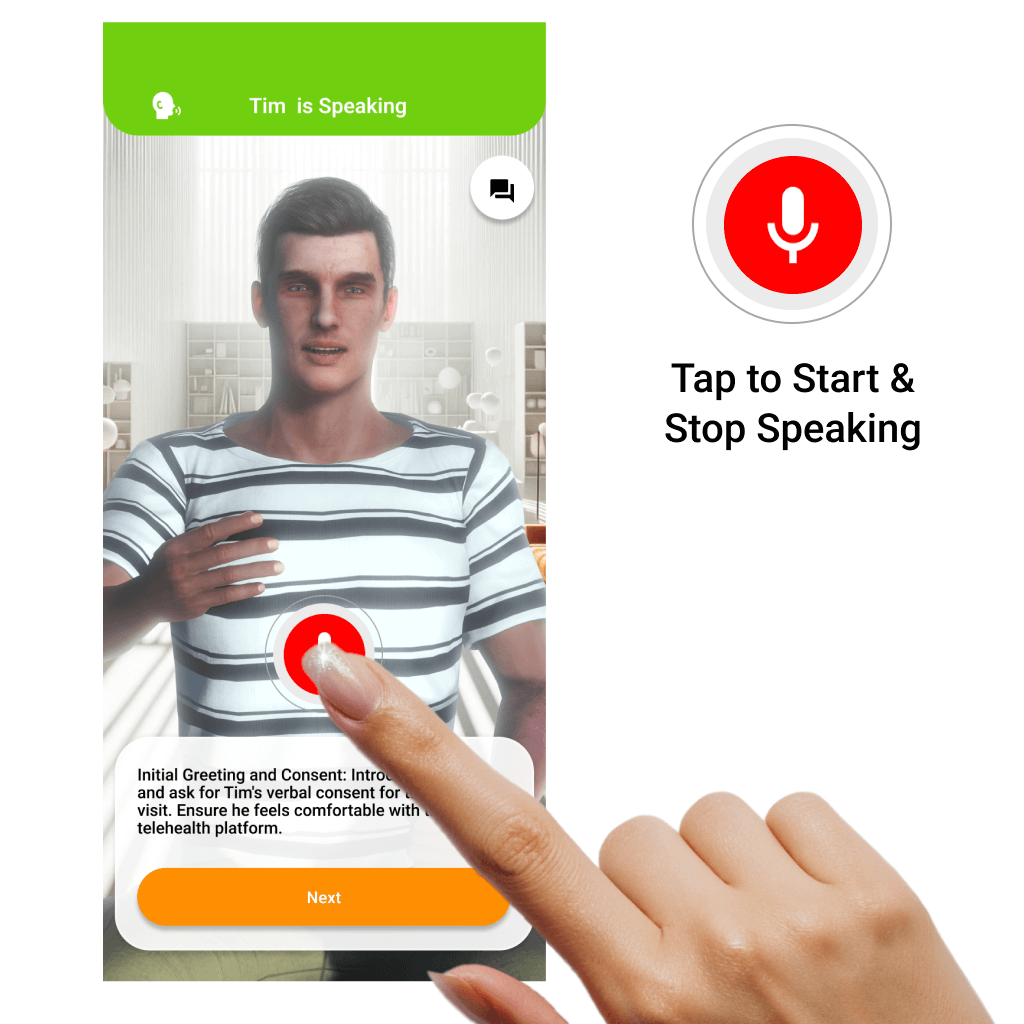
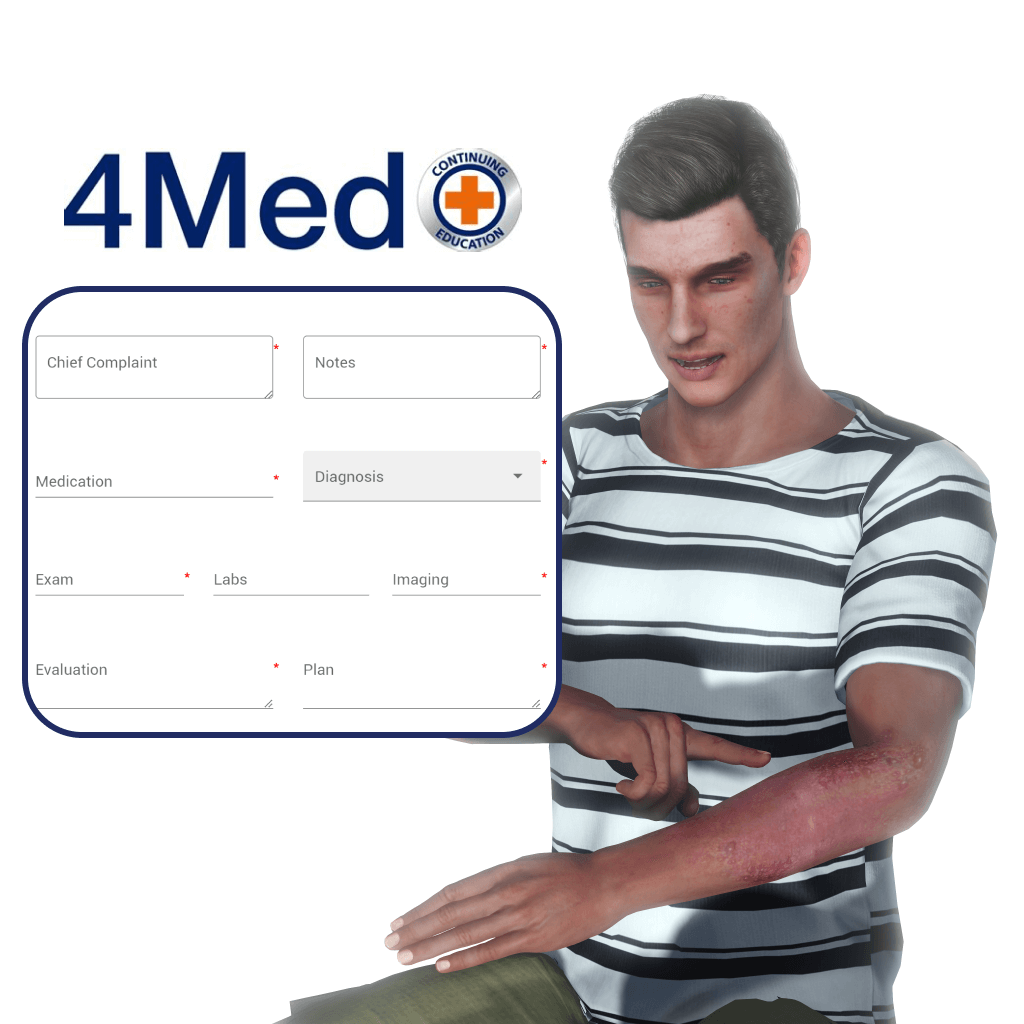
In This Virtual Telehealth Exercise, Users Enter the Patient’s Information into the 4Med+ EHR.
Benefits

Detailed Feedback and Assessment
Our platform doesn’t stop at simulation. It provides deep, actionable feedback based on a comprehensive analysis of the learner’s interaction. We assess competencies such as communication, empathy, diagnostic accuracy, and treatment planning using a detailed rubric. For example, a learner might receive feedback like:
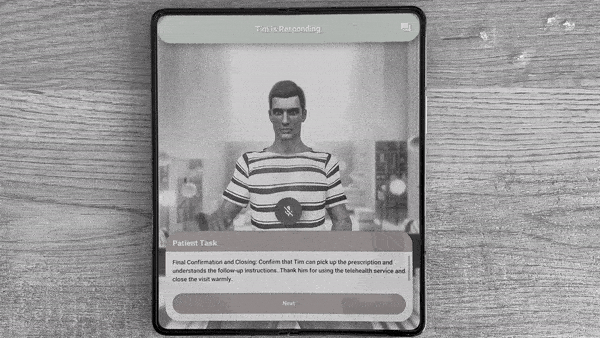
Conversational Feedback:
Initial Greeting and Consent: Score: 4 – “You introduced yourself well and obtained Tim’s consent effectively. Minor improvements could be made in ensuring he feels fully comfortable with the telehealth platform.
Prescription and Follow-Up Plan: Score: 3 – “Your explanation of the Prednisone taper and treatment plan was adequate. However, you did not provide specific follow-up steps or discuss potential side effects. Including these details would help Tim feel more informed and prepared.
This level of detailed feedback helps learners pinpoint specific areas for improvement, making the learning experience much more personalized and effective.
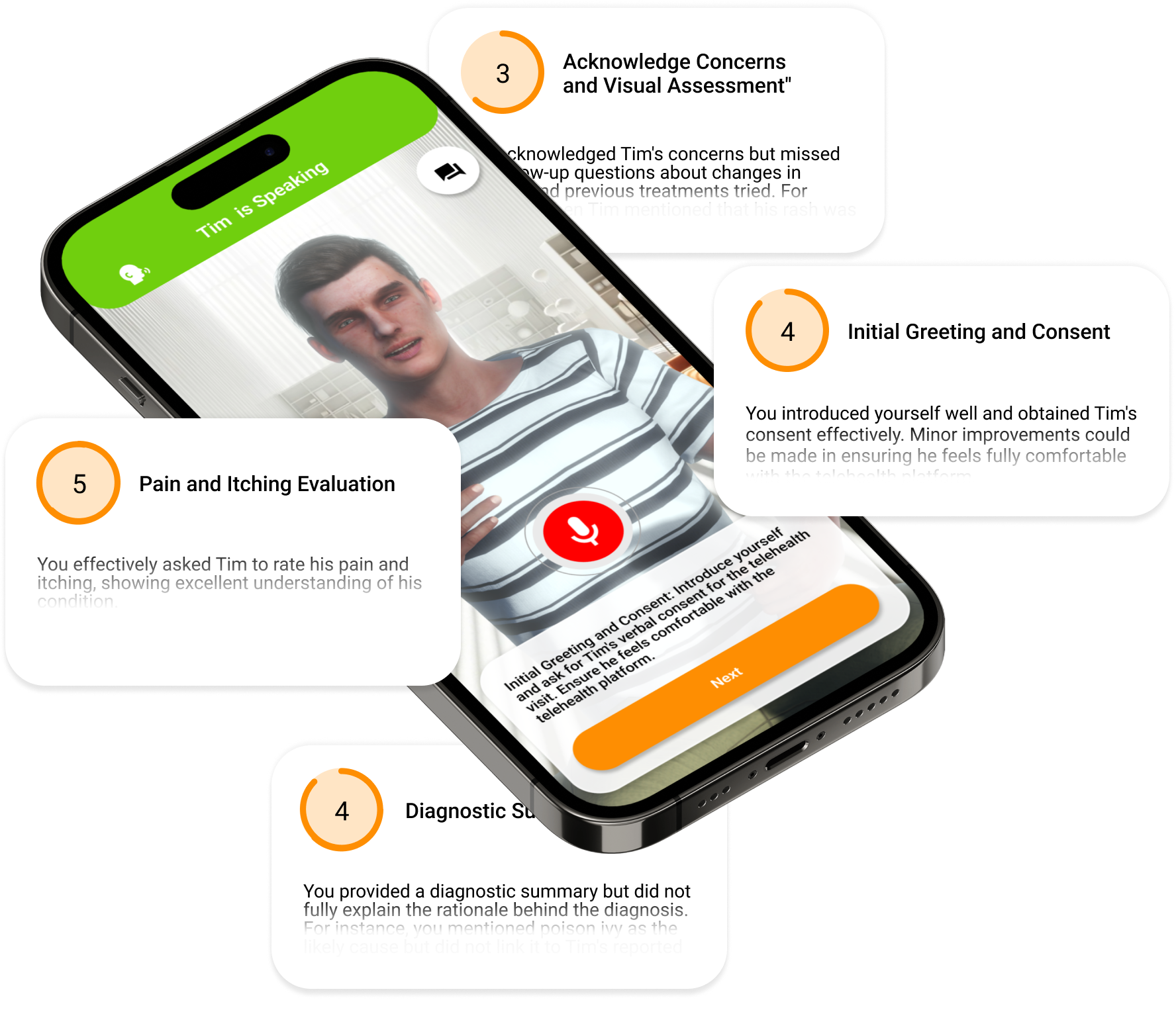
Conversational Feedback in Action
Impact
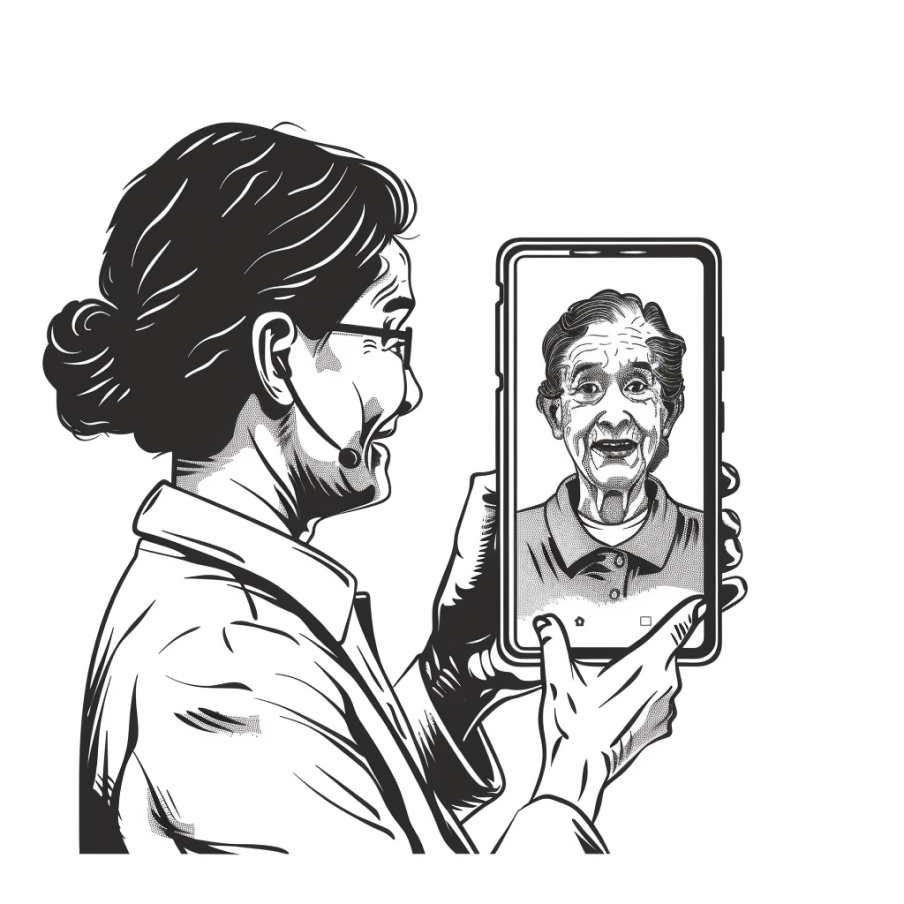
Better Training, Better Outcomes
By shifting from passive to active learning, Xuron’s virtual patient platform addresses several critical issues in medical training:
- Enhanced Engagement: Learners are more engaged and motivated when they can interact directly with the material.
- Improved Retention: Active participation and immediate feedback lead to better retention of knowledge.
- Soft Skills Development: Realistic simulations help learners develop essential soft skills, such as empathy and effective communication, which are often neglected in traditional training methods.
- Scalability and Accessibility: Unlike traditional methods that require physical presence and resources, our platform can be accessed remotely, making high-quality training available to a broader audience.

Wendy Whitmore,
Chief Learning Officer, 4MedProPlus CorporationWe are incredibly excited about our collaboration with 4MedProPlus Corporation at Xuron Inc. This partnership represents a significant advancement in the realm of medical education, blending our innovative virtual patient simulations with 4Med+’s robust training programs.
If you’re interested in developing tailored, interactive training solutions, we encourage you to contact us at Xuron.


